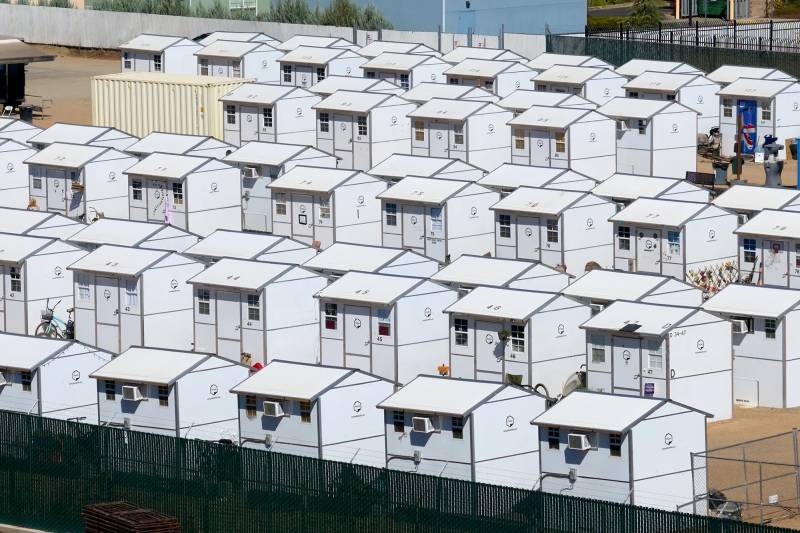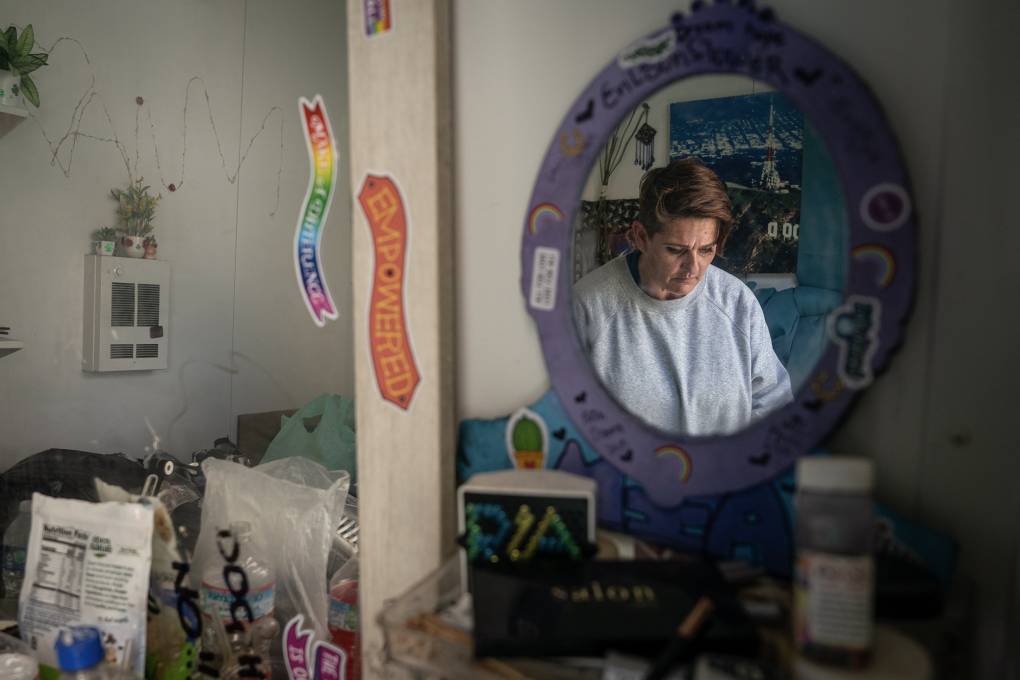In October 2023, Newsom’s office gave its first concrete update, revealing the six companies it contracted with to supply the tiny homes. They ranged from Pallet, a Washington-based company that specializes in sheltering unhoused people and already has multiple sites up and running in California; to AMEG, a company based outside of Sacramento that does disaster recovery and modular home building but hasn’t built a community for homeless residents before.
But the project’s parameters changed. Instead of buying and delivering the units, the state decided to send several of the cities cash grants and let them order the tiny homes themselves. In San José, this left the city on the hook for more money than anticipated. The state awarded the city $13.3 million. Building the planned tiny homes for 200 people will cost $22.7 million, according to Mayor Mahan.
The mayor said San José told the state it would rather get tiny homes with en suite bathrooms, which are more expensive. But, Mahan said, San José was willing to cover the cost difference.
Instead, Newsom’s administration decided to provide cash grants in place of fully built tiny homes. It’s more efficient, Hassan said.
San José plans to open its tiny home site by July 2025.
“This is a solution that, even under this timeframe, is significantly faster and lower cost than many alternatives,” Mahan said. “And we’re grateful for the support, and when unexpected things come up, we just roll with the punches.”
Finding space to put these tiny homes — which is the responsibility of local cities and counties — also proved challenging. Plans to place Sacramento’s tiny homes at Cal Expo, where Newsom made his splashy announcement last year, fell apart. Instead, the state intends to set up 175 tiny homes on Stockton Boulevard. The county plans to install the remaining 175 on Watt Avenue.
In March, a year after Newsom named San Diego County as one of the tiny home recipients, the County Board of Supervisors finally approved a location for the project in Spring Valley. But there’s still a lot to do. The county has to test the soil and make sure the site is safe. After that, officials plan to start getting community feedback on the planned project. The county has not yet bought the tiny homes or set an opening date.
“Like every other homelessness policy solution, local governments are fundamentally the drivers and fundamentally the implementers,” said Jason Elliott, Newsom’s deputy chief of staff. “What the state has done is provide billions of dollars in new investment, dozens and dozens of bills to cut red tape and a policy framework that pushes for faster action to resolve unsheltered encampments. But as we have seen time and time again in California, local commitment and partnership is the other side of that coin.”
San José, in contrast to San Diego County, approved plans to set up tiny homes at the Cerone bus yard back in October. Even so, the state didn’t send San José a grant agreement until March, Mahan said.
Of the four communities promised tiny homes, the state has made the most progress in Sacramento. In late January and early February, the state bought 155 units from BOSS, a tiny home company based in Montebello in Southern California. Those units, most of which are 70 square feet, have been built and are ready to ship to Stockton Avenue, said Kris Van Giesen, senior vice president of community development.
After a brief delay due to rain, a contractor hired by the state has started building out the infrastructure at the Stockton Avenue site, Hassan said. It’s slated to open this fall.
In Los Angeles, city officials still haven’t finalized locations for their tiny homes.
“The city has been working diligently to evaluate potential sites, coordinate relevant departments and prepare plans that will be submitted to the state by the end of May,” Gabby Maarse, a spokesperson for the mayor’s office, said in an email.
No one is ordering tiny homes
Another big selling point of Newsom’s plan: His administration opened up the contracts so that other cities and counties (in addition to the chosen four) could use their own money to buy tiny homes from the six approved vendors without going through a time-consuming and bureaucratic request for proposal process.
That move was supposed to help deploy more tiny homes quickly and, therefore, move more people out of encampments. But CalMatters spoke with all six approved vendors, and none have received any orders through that process.
Several companies said a handful of cities have reached out and expressed interest. But without cash from the state, many are finding it hard to pull the trigger.
“A lot of these cities are struggling to find the funding they need,” said Amy King, founder and CEO of Pallet.
The cheapest Pallet tiny home approved by the state contract sells for $18,900. Add an en suite bathroom, and the price jumps to $55,350. That’s still considerably cheaper than other housing options.


